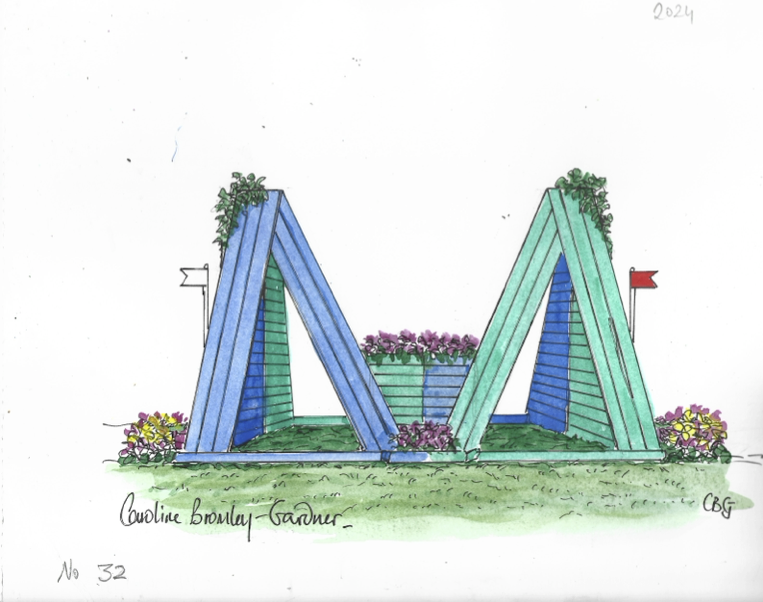2025 is no different from other years in the fact that we are running in the opposite direction to last year. We are running in the clockwise direction. We start in the main arena. It always makes the hair on the back of my neck stand on end when watching the first horse of the day set off to tackle the Badminton Cross-Country.
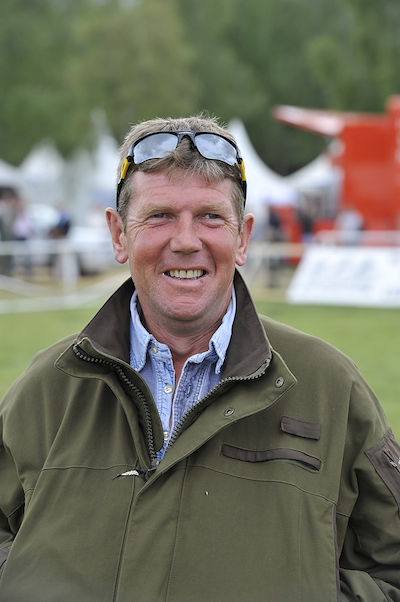
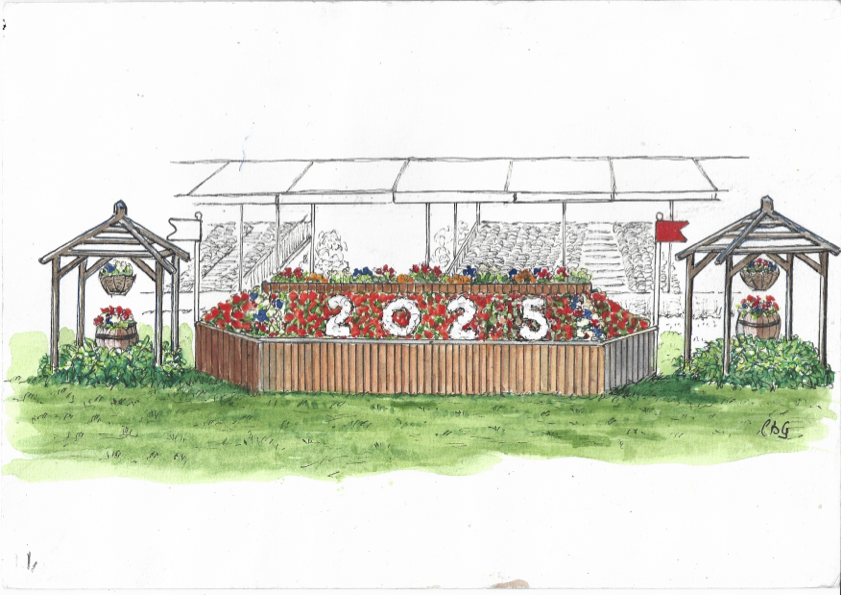
The first fence is the Spillers Starter
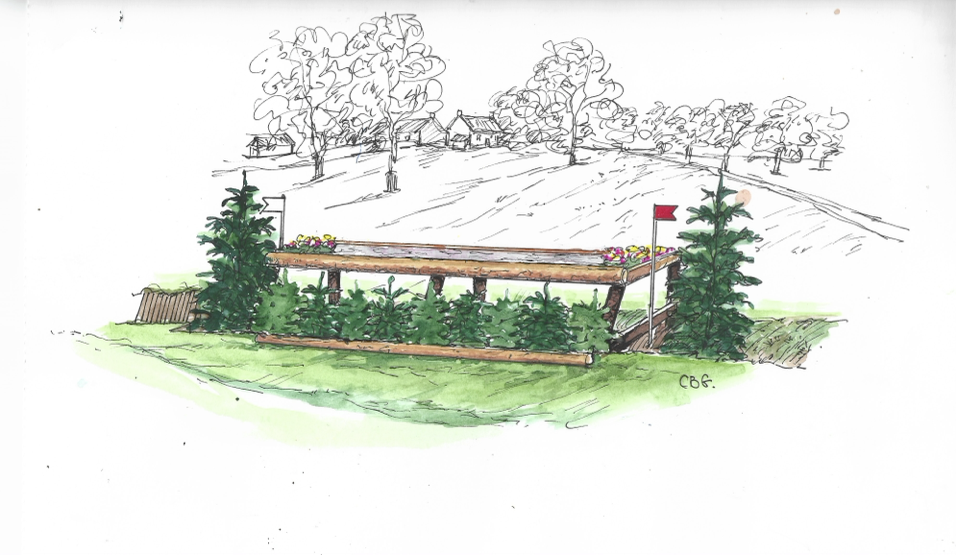
The competitors then run through the collecting ring and down the hill to the Bloomfields Horseboxes Keeper’s Table. This is probably one of the largest second fences on any course. This year it has been re-built to make it deformable. That means it will collapse if a horse banks it or hits it hard, hopefully preventing either horse or rider coming to any harm.
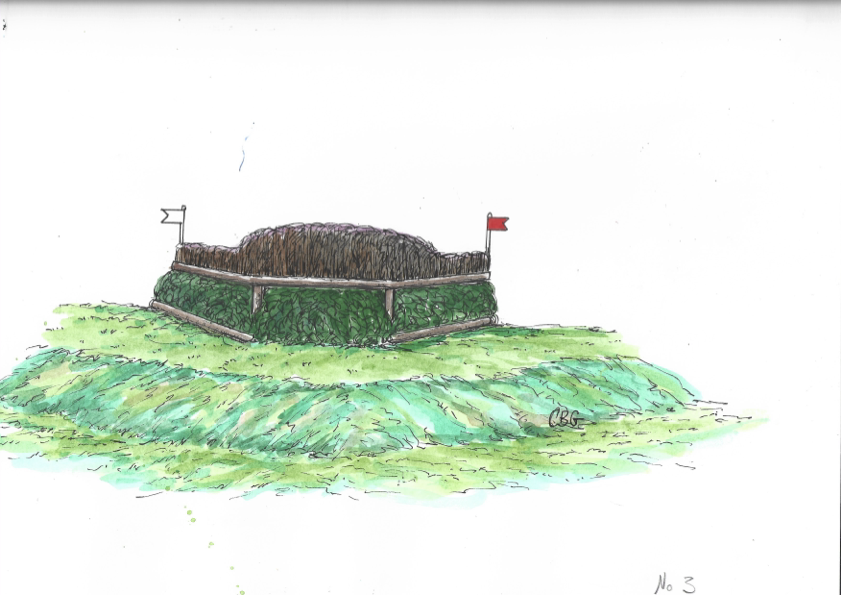
Then up the hill to Fence 3. The Tortworth Court Brush. This is a narrow brush at the top of a steep bank. It should jump easily but get the horses ready for what is to come.

The first combination on the course comes at Fence 4, the Savills Staircase. Under the straw arch and down two steps to the traditional Hay Wain at the bottom. It’s quite a steep descent from top to bottom. I think this is slightly easier than in previous years.
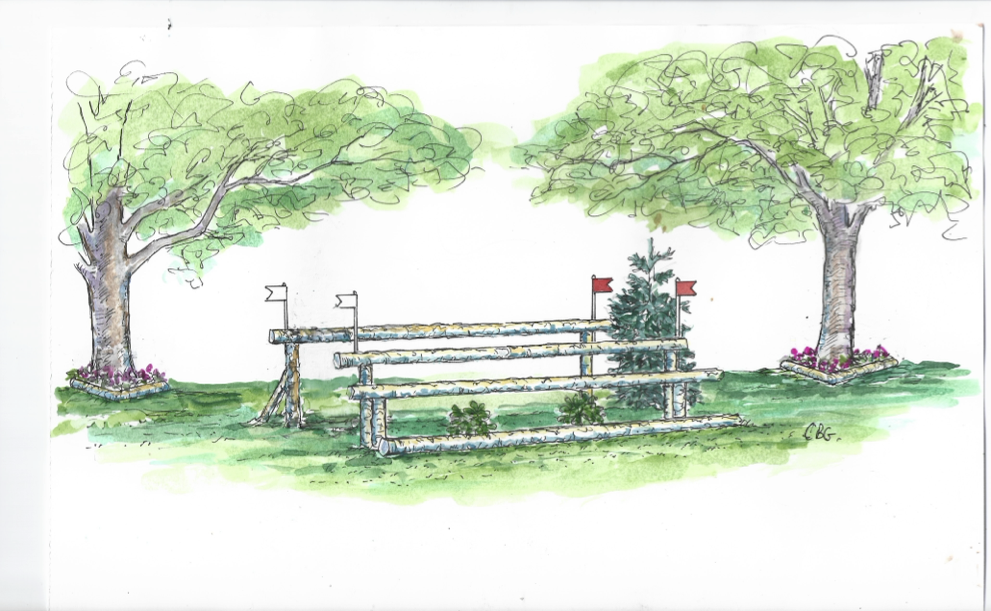
Fence 5 is the Countryside Alliance Parallel. This is the first place on the course where a decision has to be made. Competitors can take the silver birch parallel on the angle and cut inside of the tree beyond it or stay out, get straight and play safe. There will only be a few seconds difference, but this will be the first point that you will start to see the field split between those that are thinking of prizes and those that are here to gain experience.

Now the course starts to change dramatically from that of previous year’s. The course sweeps across the middle of the park, towards the Agria Corners. These are two impressive corners with brush roofs. They are numbered separately in case someone messes up the first corner badly, they can take the slow route without penalties but realistically that will kiss goodbye to their chances of getting inside the time.
From here the course sweeps around the bend into the main lake area.
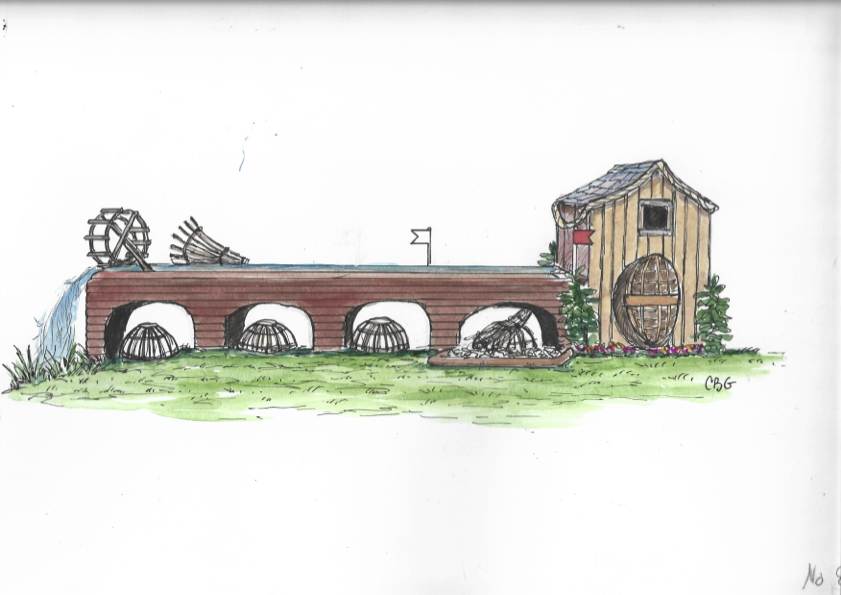
The World Horse Welfare Waterfall is a big table with water running along the top. This should jump well and allow the horses to acclimatise to the enormous crowd gathered around the lake area.
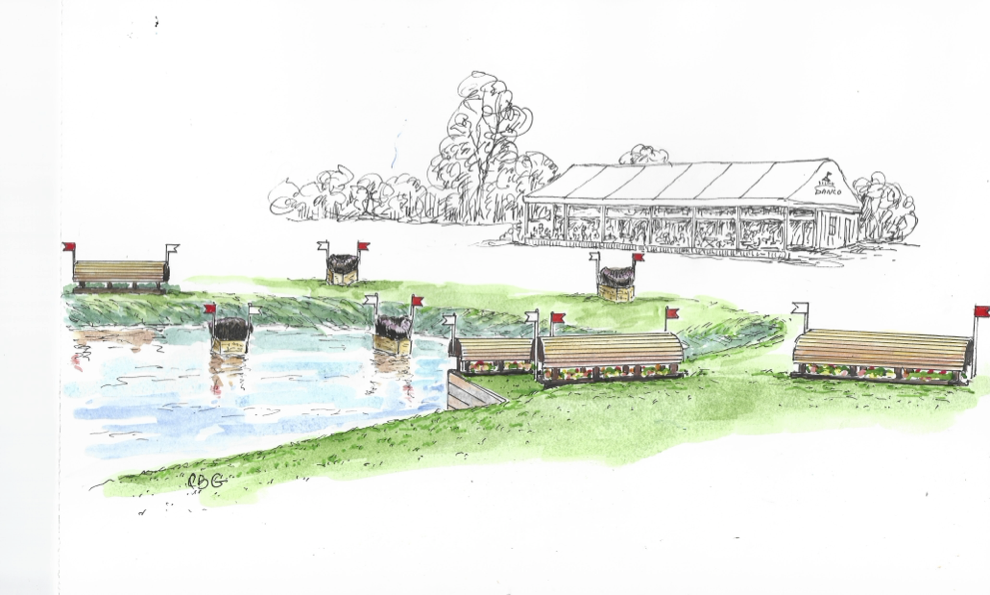
As we all know, we are going through one of the longest dry spells that we have ever had in the UK. The Lake being a natural feature is not unaffected by this so how much or indeed if any water is in it as you watch live is a matter for conjecture. All I can say, as I write, is we are working on it. The actual fences on the fast route are two very large roll tops on one stride, dropping nearly two metres over the second one and then four horse strides to a narrow brush in the water, then right and up the steep bank to another narrow brush. This will come quick and fast and will need a consummate cross-country combination to make it look easy. I think several combinations may find their Badminton dream in tatters after this fence. On the other hand, if you are leaving the Lake clear having had a good ride then your game on. There is a slow route but this will take a long time.
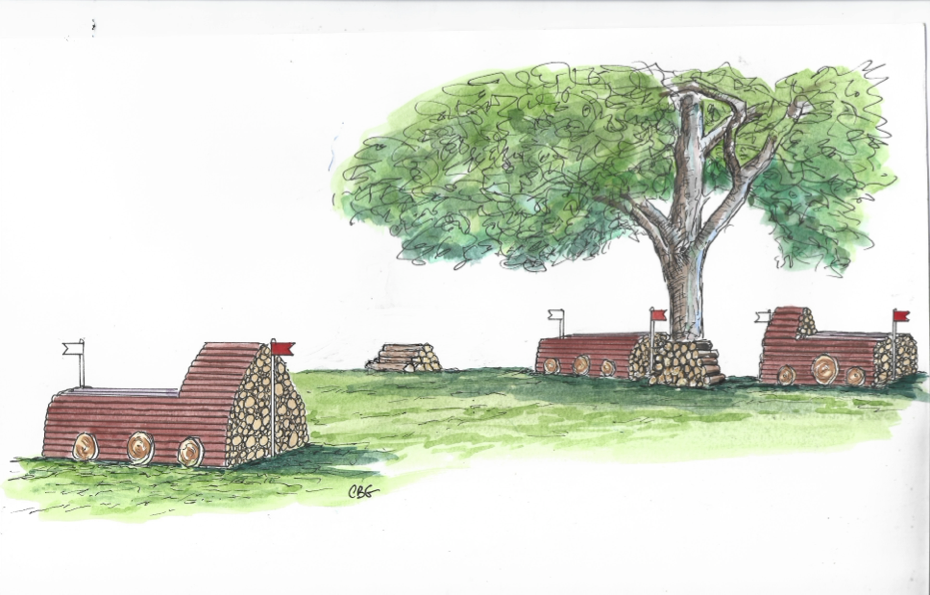
The Guide Dogs Cord Pile, although one of the biggest fences on the course should be a breather.
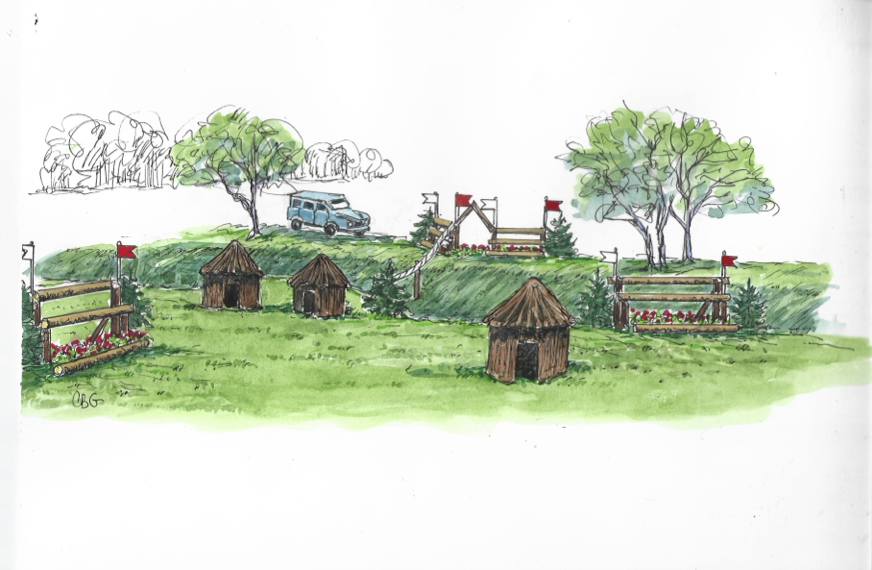
Fence 12 is the INEOS Grenadier Sunken Road. Two tall upright rails through a hollow in the ground. This fence is another deformable one which means it will collapse if hit hard. If a combination lowers a deformable fence they incur eleven penalties, which means the riders will have to really respect these fences if they want to stay in the race. The rails come at the end of a long straight gallop from the last fence which is normally somewhere that riders would really push their horses to go quickly to make up time. As any of you who ride will know or can imagine, if you totally let the handbrake off on one of these horses, they really fly but most of them will also get very strong and more than a bit rude when trying to regain control. The question here will not be can they jump the fence but will be how fast it can be jumped and not break the clip; also how far back up the track will the riders have to start setting up their horse to jump it well.
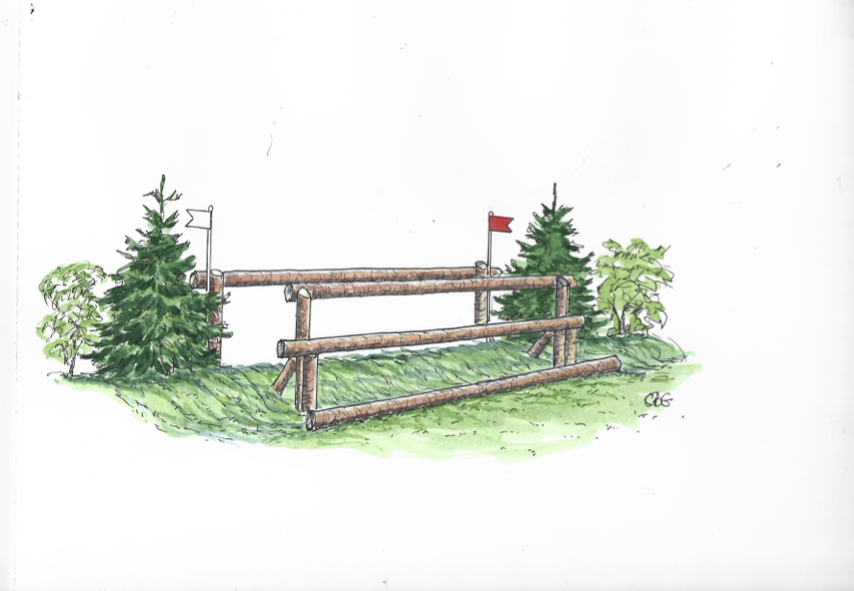
From here the combinations move across the field below Strides Copse to the big parallel in the hedgerow and then up the other side of the valley.
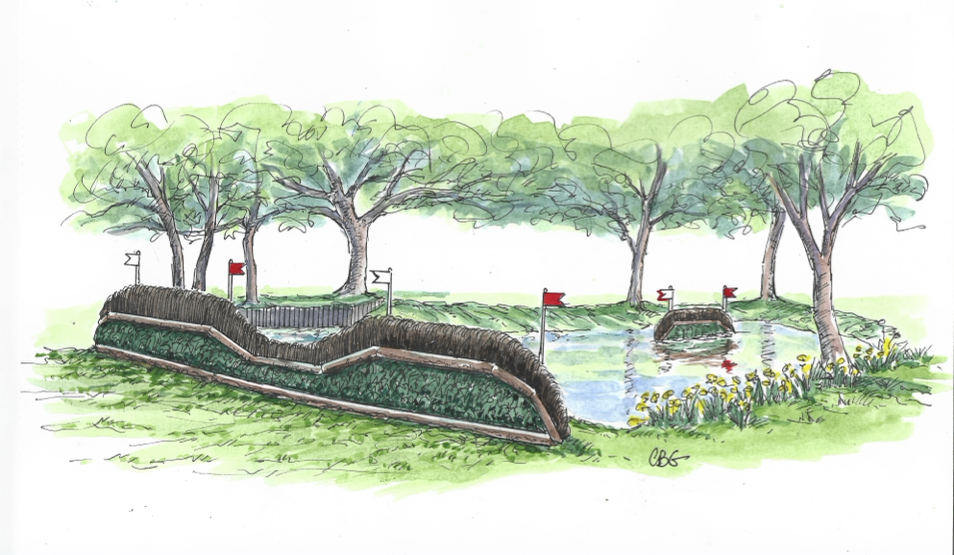
The MARS Equestrian Sustainability Bay is an idea that I stole from the Paris Olympics. The combinations can jump the left or right hedge at the top of the bank and then curve left or right to the hedge in the middle of the water. The right hedge on entry curves on less strides to the middle hedge so will come up faster and the exit is not as clear. The left hedge has more strides between the two elements but the angle is greater to the second element. It will be interesting to see who chooses which route.
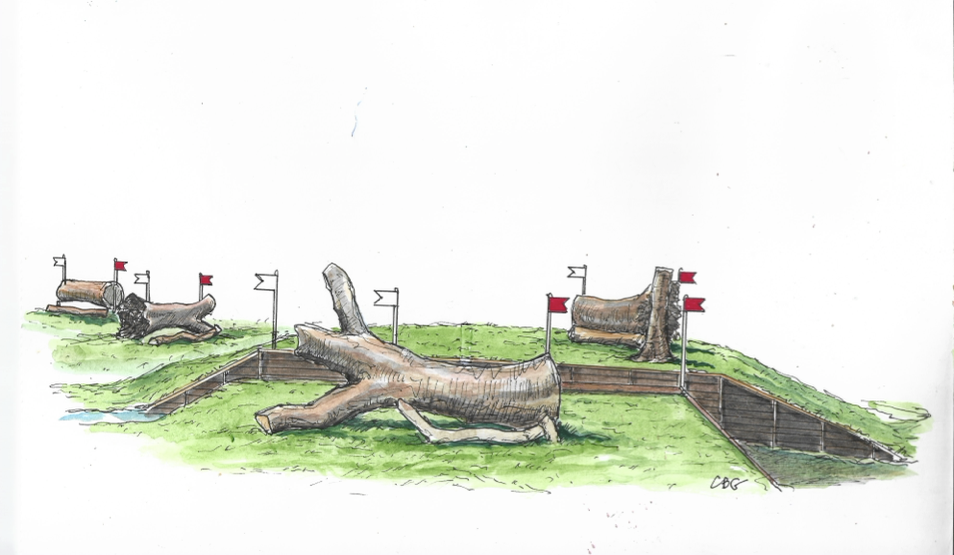
The KBIS Chasm, is a log to an enormous ditch. It is not that the ditch is particularly wide but it is very deep. All combinations must jump the first two elements and then they can make a choice. Go right to the log at the top of the bank with the big drop or left to the two logs on a steep angle at the bottom of the bank. Again, they can choose which suits their horse best.
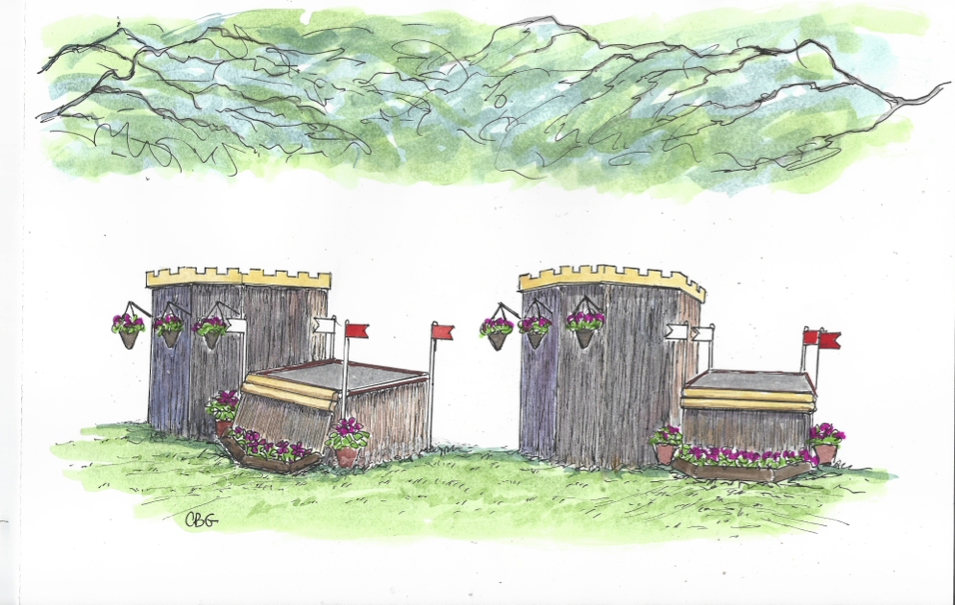
From here they go to a new piece of ground between the magnificent lime trees to one or the other of the deformable tables
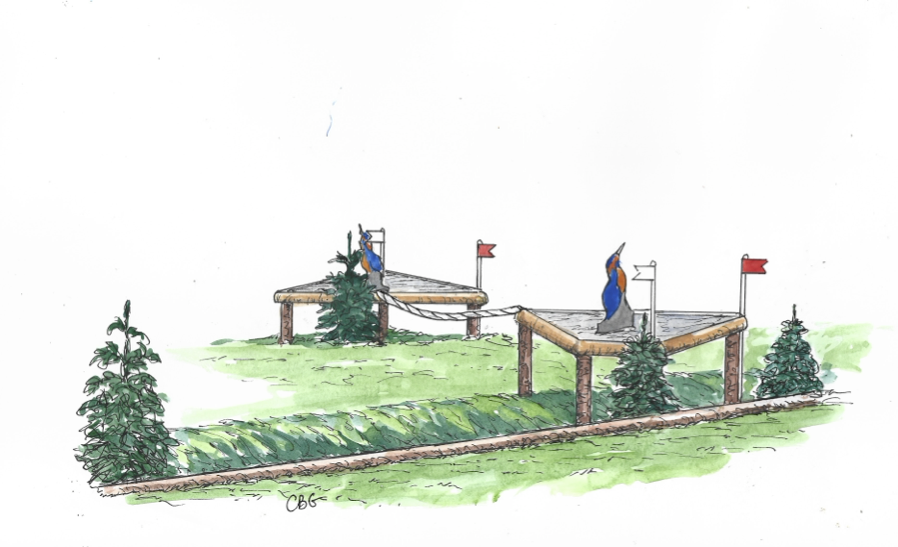
The course then runs down the hill to the Holland Cooper Corners. This is a very big corner over a ditch. The ditch is maximum spread at three metres. Angle and line will be all important at this fence. It is numbered as two separate numbers, 17 and 18. The ditch is the first number which allows the riders to choose to jump the ditch as a single fence and then do a circle to the alternative corner. This will obviously be much slower but should remove the risk of the run out.

The next question I think could be very influential as the LeMieux Eyelash Brushes ask all the relevant questions of a modern event horse and rider. It consists of two very angled hedges with a water filled ditch in the middle. The more angle the riders accept at the first hedge, the further to the right they will land over the ditch so the easier the last hedge will be. On the other hand, the riders have to avoid the horse running down the first hedge because they have asked for too much angle. This will really be like threading the horse through the eye of a needle.
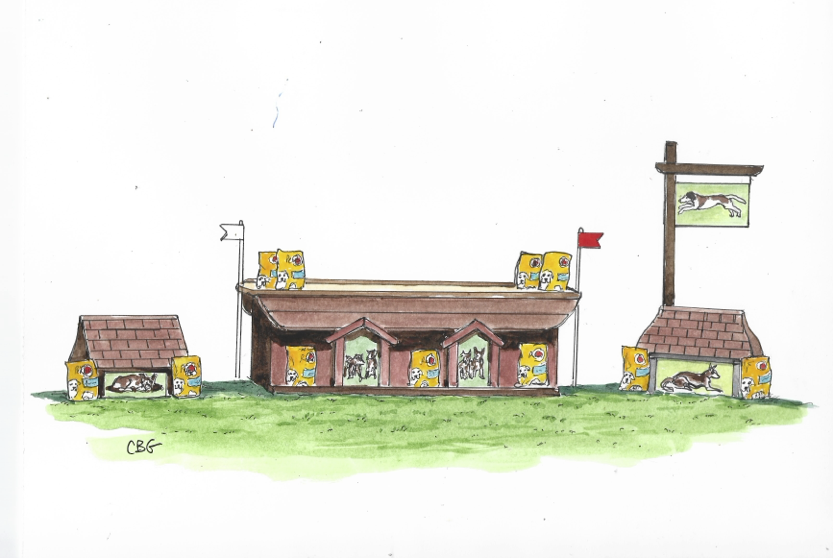
From here the track sweeps out towards the house. The Pedigree Kennel should be a nice let up fence.

The Mayston Equestrian Sunken Road starts with a two metre step down into the hollow. There is a small lip at the top of the step which makes the horses do a small jump of the step. This was quite influential last year as several horses had a little look at it before launching off. From here they cross the bottom of the hollow to any one of the narrow brushes on the far side. The course goes left from here so the brush on the left is quicker but narrower. The one on the right is wider but slower.
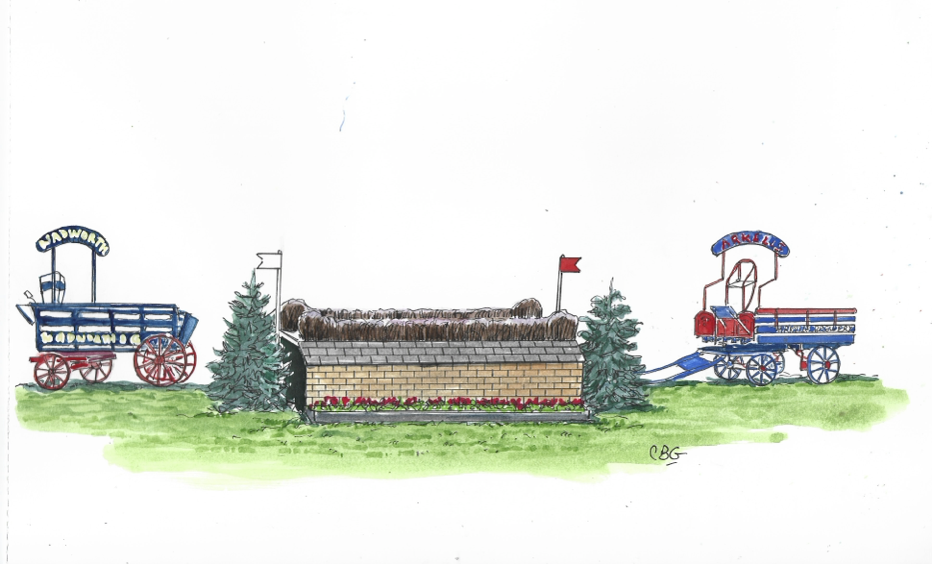
The Wiltshire Brewers Brush is a let-up fence. There is a stopping point just before this so if there is trouble further around the course the stopping stewards will be notified and will pull up the next horse and take its time. Then, when the issue is sorted, the stewards will restart the horse, taking another time so any horse that has to be stopped is not put at a disadvantage. The first fence after a stopping point should be one of the more straightforward ones to allow the horses to get back into a rhythm.
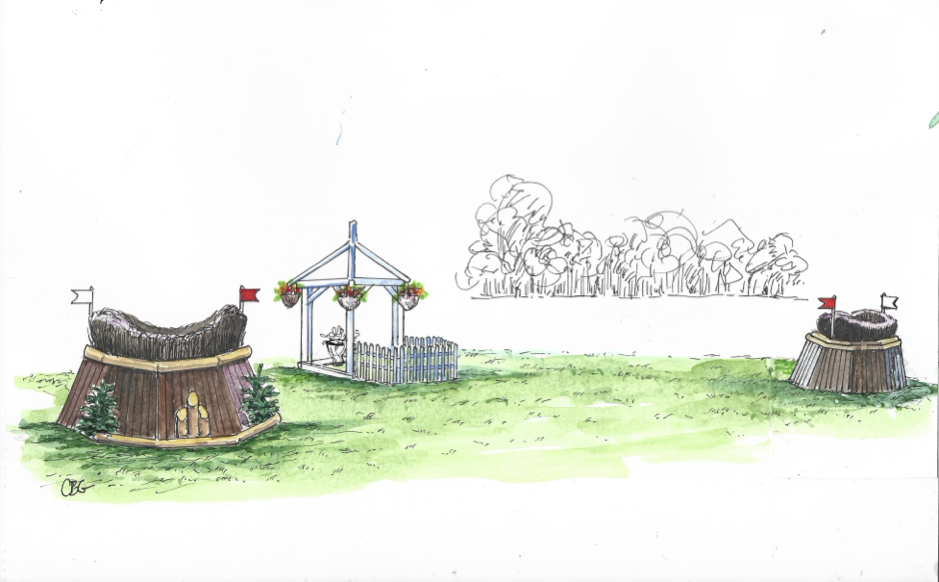
From here the course runs right in front of Badminton House, an amazing backdrop to any fence. Jumping right towards the front door is the Project Pony Brush Buckets. Two big brush fences, the fastest route is to jump the first one on an angle, cut inside the gazebo to the second or they can choose to get a little straighter and go around the back. There will only be a few seconds difference between the two routes but every second counts if the riders are thinking of possibly winning a prize.
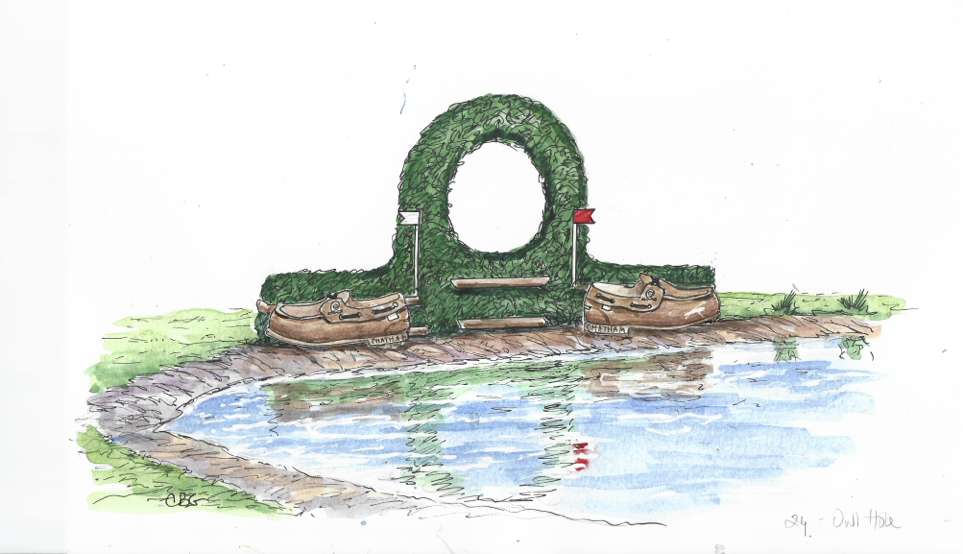
The Chatham Eyelet small brush hole out of the water and the Back British Farming Hay Rack should be straight forward. By now the riders will start to get a real feel if a clear inside of the time allowed is on the cards.
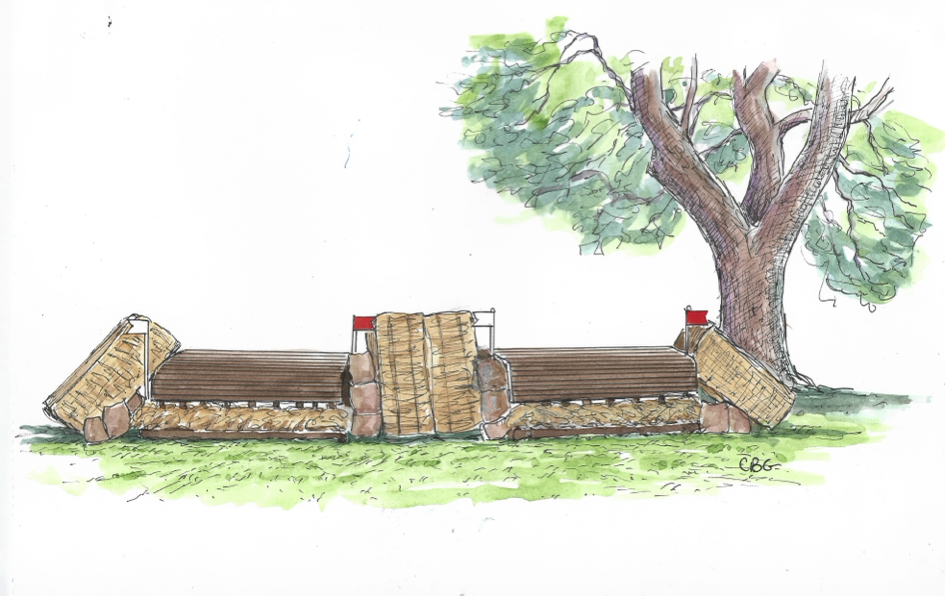
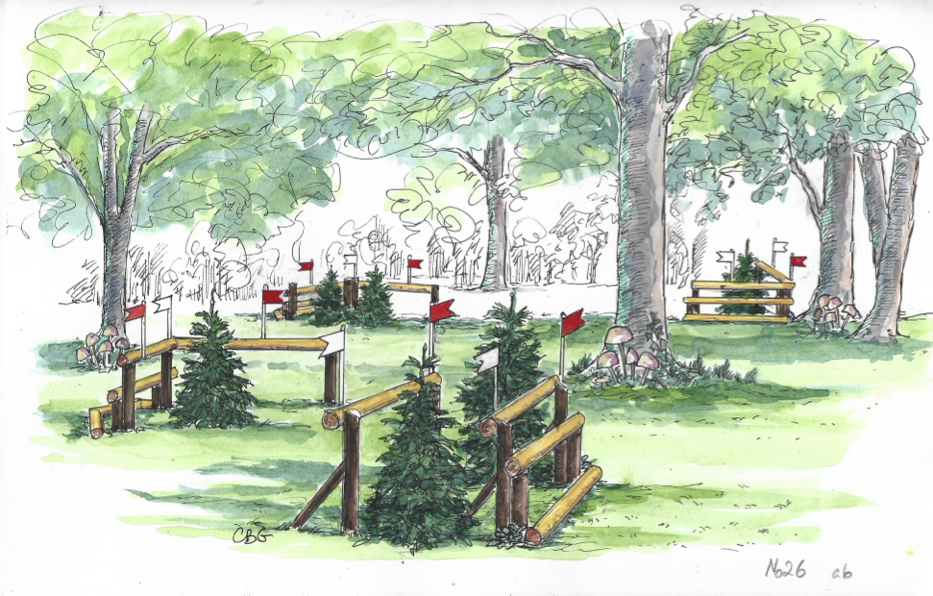
The Equidry Huntsman’s Close will be a real conundrum. To play safe and take the easier route or take on the two substantial corners. The difficulty of the two corners on the straight route is the trees prevent the riders from getting a good clean approach as the flipping tree is in the way! A bit of accurate steering is needed and that’s not always easy when your horse has been galloping for nearly 10 minutes.
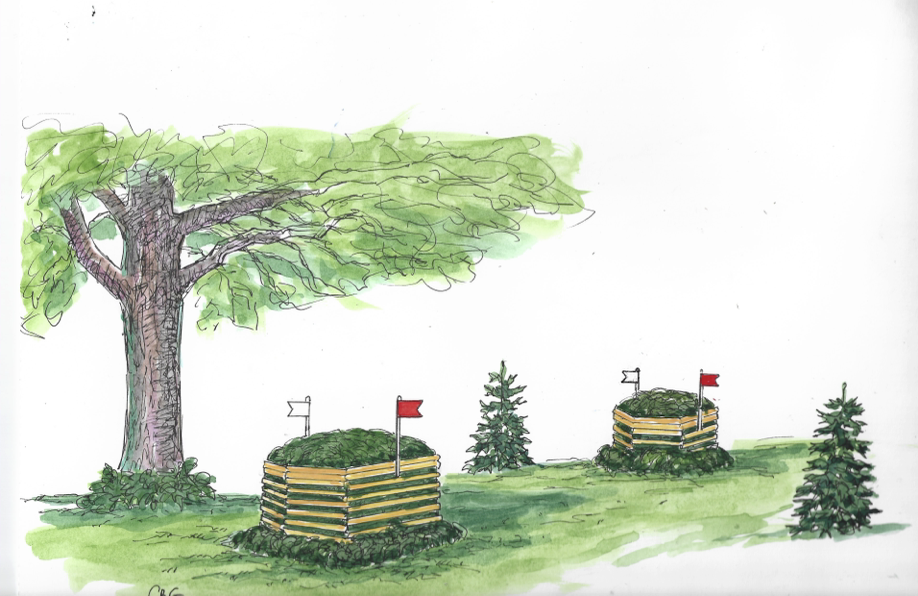
The Antech Brush Mounds should be straight forward but they are big fences if your horse is getting tired.
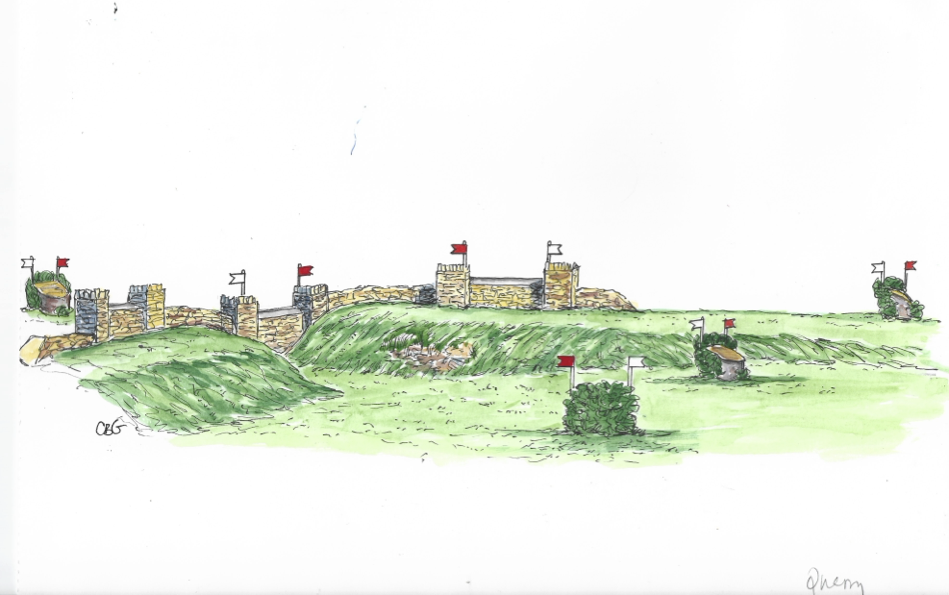
The course then sweeps around the trees to the HorseQuest Quarry. This is the last set of related fences on this year’s course. Dropping down the slope and getting straight to the first brush stump then four strides to the wall should be easy. Behind the little wall is a bit of a bank up to another brush stump. It is always difficult to know how horses are going to react to being tired. With some horses it makes their stride longer and with some they get shorter. With only two sides to the stump after the wall there is not much room to adjust and the last stump is too narrow to be a long way off it. This year, the riders will really have to assess how their horse is travelling on the approach to the Quarry and if they feel the stride getting shorter, the slower route maybe the better option.
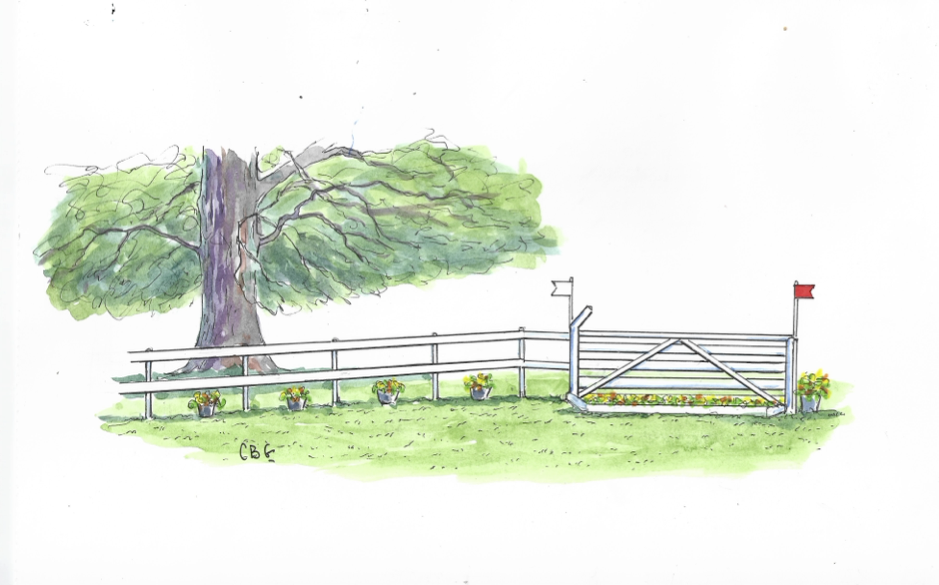
From here they run down through the car park to the Joules Double Gates. They are nearly home. Both these gates are deformable so taking too much of a risk, going too fast and knocking one or both of them down would be very expensive. I think you will see the riders slow down and really respect these two uprights. It’s not over until you’re clear here.
From this point the end really is in sight.
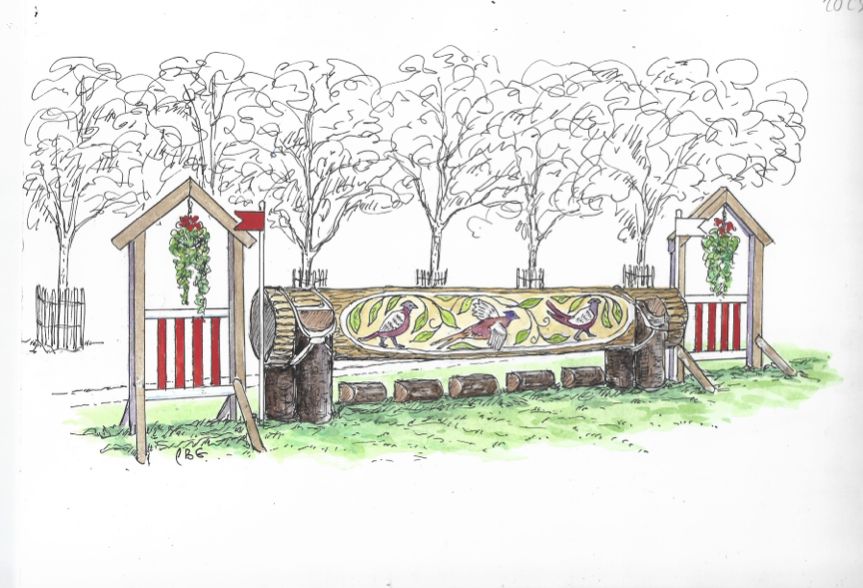
The Pheasant Log back into the collecting ring needs to be respected as it’s quite big but normally jumps well and will take riders into the arena to the MARS M. We have rebuilt this fence this year to make it deformable to protect any horse that hits it hard.
This will be a pleasant site for all the riders. There is no better feeling in the world than to have successfully faced one of the toughest tests of a partnership between horse and rider and prevailed. Good luck to everyone. I hope you have a great day.
